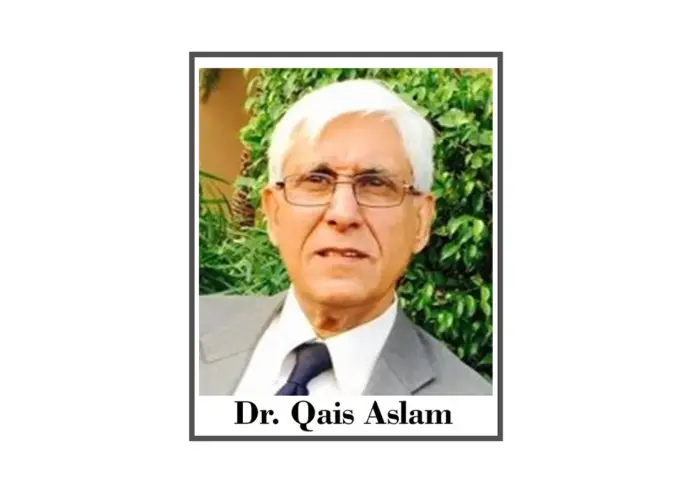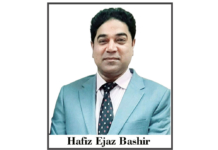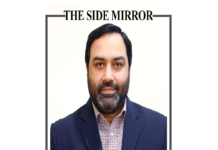The view of the classical economists was, that in an urban market economy, there are only two players – the households or ordinary people, that supply factors of production to the market for an income and demand goods and services from the market in order to satisfy their personal needs from the market with the income that they have earned as factors of production. And the firms or business entities, that demand factors of production from the market and supply goods and services (output in its value-added form) to the market for a profit that is generated after subtracting total costs from total revenue that they earn by selling these goods and services to the market demand of consumers and industry. In the view of the classical economist’s government as a political entity was there to enact laws that facilitated the market mechanism but had no role in economic activity. Prices of both goods and services as well as factors of production were set in the market through the hidden hand of self interest of forces of demand and supply. Also, in their view money had no role except as medium of exchange (facilitates buying and selling).
Keynesian economics made serious modifications to this premises. Keynes wrote that economic crisis is inbuilt to capitalism because there is a time lag between saving and investment decisions that are not automatic but have to be induced through government policy and implemented by the risk taker. Also, ‘free’ market must be restrained through government intervention when the government has to employ unemployed labor and buy unsold private produce during recession and intervene when there is cost-push or demand-pull inflation. Keynesian also showed that Money has a speculative role and can generate profits on its own as speculative demand for money. All these economic decisions have an opportunity cost and transaction costs that not necessarily allow investors to make super-normal profits in the short run but only when they transform the market in their interest through monopolies or through cartelization.
Modern neo-classical economists although recognize the role of the government as a regulator through its fiscal policy and role of autonomous central bank to intervene in the market through its monetary policies. Multinational corporations create cartels and collude and therefore enjoy super-normal profits and can play with the market forces through aggressive advertisement campaigns. Neo-classical economists also believe in short run losses for long-term gains when the tenure of each government is only four to five years under the democratic setup, further hindering the long-term economic growth by increasing the cost of doing business as is the case of Pakistan.
The government in Pakistan believes in mixed economy and public-private partnership and therefore has a vast network of government owned economic entities that provide sub-standard goods and services to the people in name of market failures and enhance the political and economic interests of the ruling classes. There are no institutional reforms in Pakistan and due to corruption and nepotism law and order deliverance is at its minimum, thus increasing extremism and terrorism on the fringes of Pakistan.
Climate change, environmental pollution, loss of biodiversity, and the resulting floods and droughts further make the economic activity in a country (Pakistan) where 40% of the population of 230 million plus live in absolute poverty, another 40% earn below Rs. 1000 a day and the 20% middle classes are finding it difficult to make end meet due to rising inflation that has reached almost 29%, interest rates are 16%, and where more that 12 million labor is unemployed, there are floods in the country and a political crisis that is not allowing the investors a plain playing field in inefficient markets, where there is water scarcity and energy sources are imported increasing cost of living even higher due to inefficiencies in energy production( for every Rs. 1 input in electricity production, output of electricity is only Rs. 0.25).
In a closed economy the major issues facing any economy are issues of unemployment and inflation. In an open economy the issues of balance of payment (and trade) deficit and falling rupee rates against foreign currency (dollar) also become important. In all forms, the core issue would be lack of productivity as well as levels of inefficiencies of the four factors of production – land, labor, capital and organization (entrepreneur).
Unemployment: Out of 230 million people in Pakistan 30% are below age of 18, therefore should not be part of labor force, although children at the age of 10 are also employed as child labor. 10% are above 60 years of age, but due to lack of pensionable employment in private sector and due to many restraints in Pakistan many old people are also engaged in paid employment in the country. Out of 60% (140 million) of adult workable population, the labor force is near 70 million, which means that half of the adult population is not part of labor force and most of them (mostly women) are homebased workers or unpaid self-employed in rural areas. According to World bank data, unemployment rate in Pakistan 2022 was 7% (Almost 5 million, and adding 4 million youth turning 18 years and those that have been rendered unemployed due to floods the figure comes to 12 million. Jobs for 12 million people are required in 2023 when the GDP growth rate is near 3.0% almost the same as the population growth rate of Pakistan.
Inflation: Consumer price index of Pakistan in April 2022 stood at 13.4%.and inflation in December 2022 reached 24.5%. According to too Pakistan Bureau of Statistics, in 2022 in Pakistan Food prices surged 35.5, with onions (415%), tea (63.8%), wheat (57.3%), eggs (54.4), gram whole (53.2%) and rice (46.6%) recording the biggest increases. Other upward pressure came from cost of transport (41.2%), namely motor fuel (49.45%), clothing and footwear (17.1% ) and housing and utilities (7% ).” The cost of living has increased to a level that the poor can not make two end meet and even the middle classes are reeling from this unprecedented increase in inflation. Coupled with 16% interest rates and 23.5% inflation rates the cost of doing business has skyrocketed, thus further disrupting the investment cycle in the country. (source: https://tradingeconomics.com/pakistan/inflation-cpi)US
Trade and BOP deficits: By end of 2022 the trade deficit of Pakistan stood at US $ 2.85 billion, and the Balance of Payment’s current Account deficit stood at US $ 0.27 billion thanks to low imports due to strict administrative controls. But at cost of further reduction of economic growth of the country. “The top exports of Pakistan are House Linens ($3.61 Billion), Rice ($2.14 Billion), Non-Knit Men’s Suits ($1.8 Billion), Non-Knit Women’s Suits ($1.06 Billion), and Knit Sweaters ($950 million), exporting mostly to United States ($4.04 Billion), Germany ($2.13 Billion), China ($1.97 Billion), United Kingdom ($1.73 Billion), and United Arab Emirates ($1.09 Billion)”. It should be noted that all the exports of the country are low value textiles, and the country lacks the capacity of diversifying its exports or its export partners in order to enhance the capacity of the country to earn foreign exchange when the foreign exchange reserves have reached as low as US $ 4.34 billion. On the other hand, “The top imports of Pakistan are Refined Petroleum ($3.87 Billion), Petroleum Gas ($2.24 Billion), Palm Oil ($2.15 Billion), Crude Petroleum ($1.92 Billion), and Raw Cotton ($1.68 Billion), importing mostly from China ($14.7 Billion), United Arab Emirates ($5.34 Billion), United States ($2.78 Billion), Indonesia ($2.43 Billion), and Saudi Arabia ($1.8 Billion). Most of the imports of Pakistan are energy sources, cooking oil and raw cotton, machinery and food grain. (Source: https://oec.world/en/profile/country/pak#:~:text=Imports%20The%20top%20imports%20of,Saudi%20Arabia%20(%241.8B)).
Exchange Rate: Average exchange rate of Rupee against US $ was Rs. 225 to one dollar, the highest official rate reached at Rs. 24o top a dollar and Rs. 260 on the open market due to speculative demand of US $ in the Pakistani market and also due to the deteriorating trade regime between Pakistan and the rest of the world. This increase in value of US $ in Pakistan further adversely impacted the price levels (inflation), the GDP growth rates and the economy as a whole during 2022.The Fiscal and monetary measures needed to stabilize the four above named economic problems of inflation / BOP deficit as well as of unemployment / Exchange rate deterioration are difficult in a country where those upper 10% that can pay their taxes shift the incidence of tax to the consumer through tax aviation, pilferage and downright corruption and the rest 80 % of the poverty stricken population are subject to harsh indirect taxes, therefore the 15% middle classes with fixed or low incomes bear the brunt of both direct and indirect taxes with a narrow tax base, undocumented economy and all manners of economic inefficiencies that are shifted to the consumer and investor by seven large, cumbersome and inefficient governments that have failed to provide justice and other services to its people.
Productivity: In a country, where energy inefficiencies are high, where there are ten ways of producing electricity domestically and where 60% is produced by foreign oil and where water is wasted (40% is evaporated on the canals) and has become a water deficient country, where industry contributes only n27% of GDPO (large scale manufacturing contributes 13% and small scale only 1%). Where farming contributes only 8% to GDP the question of productivity of its natural and human resources comes to mind. Pakistan with all its socio-political problems his least productive in the region. Its land where only 20 percent contributes to the market is least productive in the region and needs land reforms, water efficiency and seed management to become food secure. Where its labor is least productive in the region, where the children of the masses neither get good schooling, not any form of international work habits or skill enhancement nan does not contribute to economic growth when out of 25 million children enrolled at school only less that 2 million pass metric and almost half drop out before they reach class 6. The standard of education of 70% of schools in the country is below any national or international standards of productivity, scientific knowhow or world view.
The capital – financial or technological -is almost nonexistent in Pakistan, and where 90% of SME’s fail in the first year of entrepreneurship and only largescale capital succeeds, and that too0 by getting subsidies and non-monetary benefits from the government. Most of service sector and educational institutions in Pakistan do not contribute in earning foreign exchange, nor are they helping in saving foreign exchange because of their low standards and inbuilt inefficiencies.
Government in Pakistan is also a major contributor of inefficiencies into the economy because of its political wrangling, keeping inefficient and dishonest employees at the cost of tax payer and ever increasing its current expenditures and reducing the volume of its development expenditures, because the gtovernmnet6’s budget are oriented in feeding the rich and fleecing the poor.
All this has to end. We need small manageable governments that can deliver services through equitable policies and implementation of viable economic policies that help investment atmosphere and keep inflation in check to a permissible level. Businesses have to compete under the restraints of environmental challenges, legal financial and technological restraints, service sector has to become exportable, energy and food sector has to become self sufficient producing from domestic resources so that we can not only earn foreign exchange, but we can save foreign exchange. Businesses and households will have to learn conservation by implementing the principles of SDGs in their daily lives and businesses. Educational institutions, especially schools will have to become 21st century orientated by imparting international level ski8lls and work habits. Law and order, tax regime and imparting of justice would have to be universal and not selective. Then and only than we in Pakistan start working towards a viable economy that stops become a beggar and raises its head high in the community of nations as a proud, peaceful and economically viable nation. The Government, Private Sector and the general public (households) will all play their part is creating a transparent, accountable, productive and viable Pakistan.







